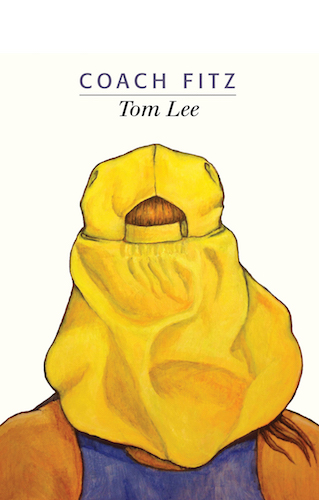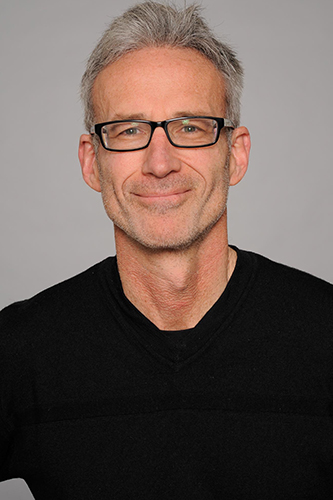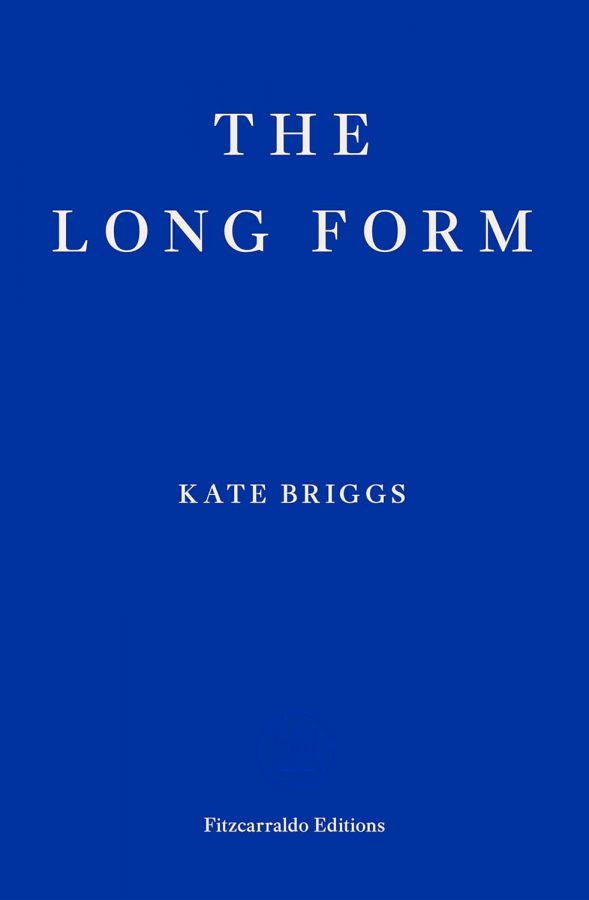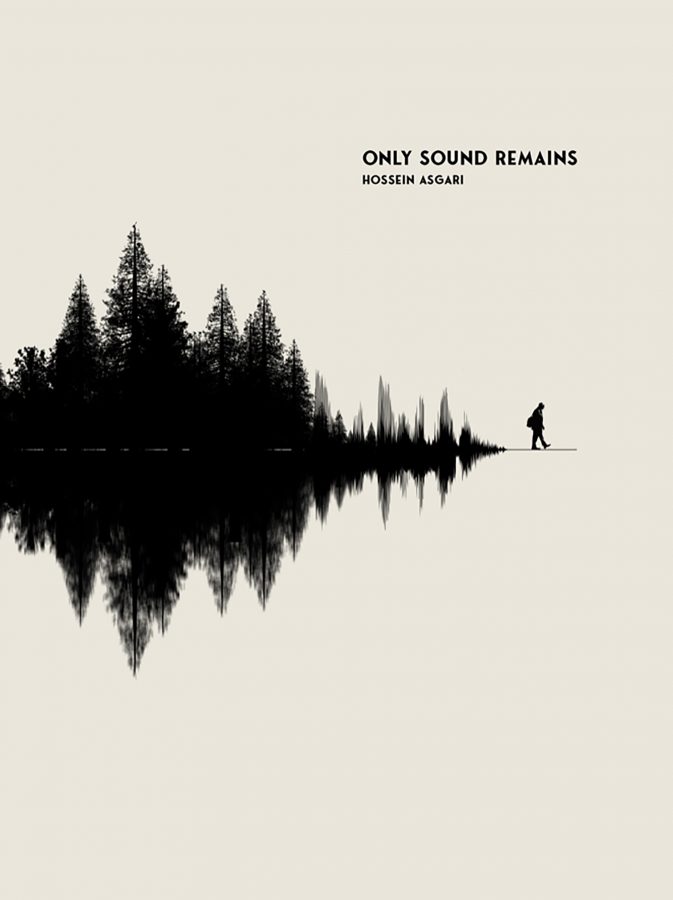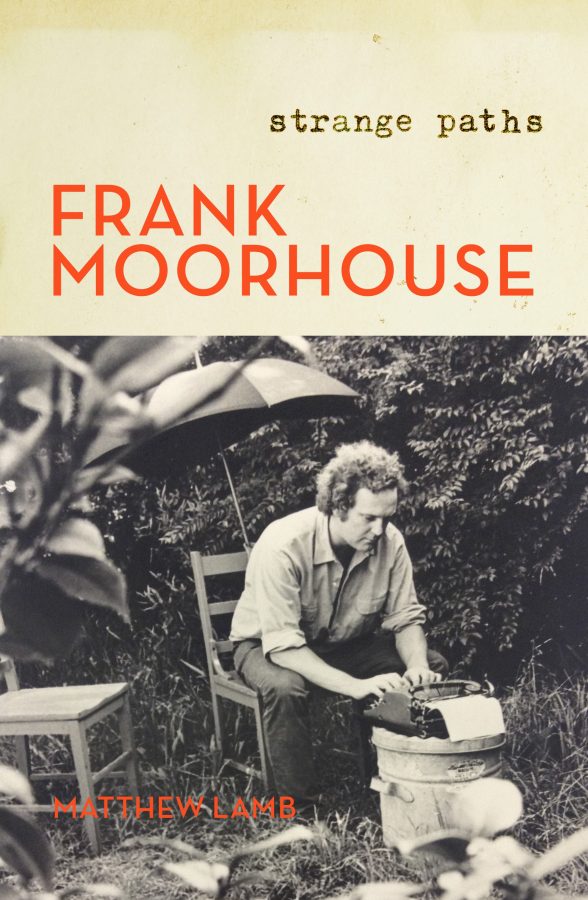At one level, Tom Lee’s debut novel is a report on the masculinity crisis. It begins on a confessional note by Tom, our narrator:
I began with a small body. Late to mature, I measured myself against my thicker, hairier peers. I sought advice from the magazines that displayed the bodies I desired. I needed muscle, a good layer of it, to make up for my lack of pubic hair. My maturity was beyond my control, but to some extent the form of my body could be manipulated. I found an old bench and rusted weights out the back of the pottery shed at school.
The gaze of male peers is borne by regular trips to the gym, submitting an undersized body to the rigors of weight and circuit training.
I debuted my updated body some six months later in the school gym, with its forgiving wooden boards and black rubber mats, louvres, dust and radio. Benches in all varieties of angles, some forcing the body into a beggar’s posture, others like a breaking wheel, cages of steel, winches and pulleys isolated from any purpose other than to isolate muscle and put it under duress.
I remember this school gym and its torture chamber layout. I don’t recall the pleasure of debuting of a newly muscled body in it. But I do recall our own fitness guru admonishing one of our number for blithely referring to his body in some uncritical respect. Reg Puller, our aptly named PE instructor, was himself a fine physical specimen. Before dismissing another feeble alibi for dodging group exercise, Reg, not noted for his interest in diction and phraseology, rebuked our hapless companion with a locution that swiftly entered school folklore. ‘It’s not your body, son; it’s your physique.’
Heartily mocked thereafter, Reg’s retort nonetheless carried a message that would work its way down other avenues into our fragile self-regard: your masculinity could be made secure by owning a body that others could admire. All those Rocky and Rambo films did the damage, with their inspirational training scenes that modelled the increasingly professionalised lives of our sporting heroes, who no longer played sport like us but elite sport.
Henceforth, we boys would regard our stripling frames in the self-conscious modes recommended to young people everywhere today, worrying more than we ever had or needed to over the size and musculature of our physiques. Fitness would no longer mean how hard you puffed on the sports field but the sort of pride you hoped one day to take in unshirted appearances at the gym, swimming pool, beach, or wherever the occasion demanded it. The body ideals of gym fitness included other aspirational meanings that took root in our boyish wits. We learnt to scorn all signs of obsession, of course; but we also learnt to obsess. Age would prove the best instructor for unlearning the obsession, but not before we passed it on to younger peers, by which time it had corporate backing and promised new career paths.
Tom’s pursuit of physical fitness takes him far from the school gym. No longer about display, it is tied up with a more elusive goal: ‘Since the death of my maternal grandfather, Peter, I had felt the presence of an emotional rift that I had the good sense to know might be trained into an advantage.’ The advantage is not spelled out beyond ‘bringing focus to my life.’ Grandfather Peter helped provide that focus by taking a close interest in Tom’s fitness goals and the self-improvement they implied. Perhaps it was Peter who planted the seed in Tom’s mind about the heroic significance of training in life’s quest. The opening sentence hints at an emotional rift in all of us, a deep-seated need for the sort of mentor Tom lost with the death of his grandfather: ‘The naked human seeks out their trainer. Some find this person in their family. Some in friends. Others never find them. Others don’t believe they need to.’
It is this spiritual yearning motivating Tom’s fitness goals that catches the eye of a former long-distance runner and psychoanalyst known around the traps as Coach Fitz. She responds instantly to Tom’s carefully worded proposal and training begins. As the pair balance their limbs against palm trees in Centennial Park, the first hint of Coach Fitz’s eccentricity is glimpsed in a shifting gaze, overdone warmup routine, and hushed advice to ‘lose yourself in the stretch.’ (Tom arrays these hints for us; it’s only later we notice his.) As they start off on a light jog, Tom tells us Centennial Park ‘occupied a mystical place within my imagination,’ as ‘one of a series of places in the inner city and eastern suburbs which replenished what I would later come to call my landscape needs.’ His letter to Coach Fitz referred to ‘a strong affection for running as a means of obtaining a sense of agency over a vast environment and maximising different perspectives on a place,’ but his landscape needs are rooted deeper than this. By visiting the forests and groves of the city this displaced country boy can recover something of the purpose he left behind on the family farm.
I had a theory my emotional equilibrium was set to the relatively open, sparsely populated bush landscapes of the central west of New South Wales, where I spent the first part of life and where my family lived on a sheep and cattle farm. In order to settle myself in a place I needed to regularly move through an open landscape of abundant and varied vegetation.
Tom’s theory might explain several observations about the Indigenous inhabitants of the places on his itinerary, though he makes no connection between his landscape needs and Aboriginal Country. Or—like anyone else’s ‘theory’—it might just be his preferred fiction. In fact, his pursuit of emotional equilibrium is shaped more by his urban environment than it is by his memory of growing up in a rural one, as his gospel reading of Good Living magazine indicates. In any case, it’s part of an ‘emotional rift’ that Coach Fitz, too, senses she can work with:
Coach saw running as a useful mechanism through which to live well. As a result my training program involved specific sites of historical and aesthetic interest in addition to physical exercise. She encouraged me to keep a running diary filled with scrupulous observations of different environments, as well as my physiological and psychological states as I passed through them.
With its short chapters titled with Sydney park and place names, Lee’s novel takes the form of a running diary, the first of a series of ‘enigmatic methods’ devised by Coach Fitz. These methods coat a spiritualist patina over the experience of the exercising body, like the mantric breathing exercises she calls the breath friend.
My breath friend would be hick-a-chee, she told me. As well as the related sequences hick-a-chee hick-a-chee whaa and hick-a-chee hick-a-chee whaa-whaa-whaa. Coach said it was my task to add detail and vivacity to the repertoire of feelings and images associated with this breath friend. Throughout the session I found it difficult to gauge the level of her seriousness, but based on the complete lack of irony in her communications so far I decided she was in earnest.
The difficulty Tom has reading Coach Fitz is one we gradually experience reading Tom. For now, Tom takes to his self-actualising exercises with all the fervour of a novice monk, ‘thinking about how this program would change my life.’ He’s especially taken with his coach’s idea ‘that athletics and sport ought to be regarded as practices that allow the transformation of self and an immunising response to stress rather than repeated victory over others.’ In the Coach Fitz creed Tom finds exactly what he’s looking for: a way of elevating a training obsession into a way of life, turning fitness into self-fashioning. In this program, he will ‘direct my daily efforts and daydreaming to the possibility of a future me that was faster on foot, sensitive to the environment and mentally resilient.’
Diet is essential to the regimen, the fitness obsession feeding the food obsession and vice versa. Fine food features prominently in Tom’s self-actualising visions of the good life.
Throughout the day I would eat fresh vegetables such as green runner beans and capsicums, bread, nuts, and fruit, favouring bakeries such as Iggy’s in Bronte, Sonoma in Five Ways and Brickfields in Chippendale. After buying a loaf I would repeat the phrase you can’t cut corners on bread, in confirmation I’d done the right thing.
Like the Catholic who eats fish on Fridays, Tom needs dietary confirmation that he’s ‘done the right thing.’ An ocean-side walk, a trip to the bakery, nibbling bread dipped in olive oil with the warm sun on his back—perfect; or nearly so. Even on the perfect day Tom needs the reassurance of an internal coach:
On such mornings I would repeat any number of phrases to myself, affirming the blessed nature of my existence. You live a charmed life, heaven on earth, it doesn’t get much better, how good?
The need for reassurance links back to the confessional frame, where Tom disclosed the sense of frailty that fitness magazines promised to cure. His youthful gym visits enact the contradictory impulse of the confession: to expose oneself to the judgement of others and to escape it. The tension between the two is felt throughout the novel. Starting at its source in the shared first names of author and narrator, it rises to the surface when Tom resists sharing intimate details with Coach Fitz for fear of putting himself ‘in a position of greater vulnerability.’ For the most part, it can be felt beneath the surface of his discursive interests, behind which gathers the question: can physical fitness solve (not just soothe) feelings of inadequacy or are they an ongoing expression of them? Tom’s quest takes him outside the gym into Sydney’s underexplored parks and reserves. Whether or not he escapes the gym in the psychological sense is less clear, creating an uncertainty regarding how we read Coach Fitz. Is Lee’s novel a Bildungsroman narrating the path to social acceptance or an anti-Bildungsroman narrating the stalling of the quest?
Good Living
The contemporary fitness cults that mandate positive thinking and index physical exercise to self-worth have been described as the New Victorianism, sometimes in the same lifestyle pages Tom reads so avidly while sipping beer at the Glengarry in Redfern. The genteel habit of perusing the Good Living section of the Sydney Morning Herald was picked up in high school, where Tom spent many an hour ‘imagining the freedoms of early adulthood, key among them buying dinner out in restaurants and drinking alcohol in pubs and bars.’
I read about wasabi mash, tapas, Balmain bugs, scallops, bruschetta and duck confit. I imagined people drinking cocktails in the street in jaunty but unadventurous outfits, smiling with the knowledge that an evening of diverse and steadily intensifying pleasures awaited. It was as though those imaginings… had crystallised within me and continued to offer a source of motivation, impervious to the ridicule of my peers.
The difference between the fitness magazines Tom sought advice from as a skinny kid and the Good Living magazine he seeks advice from as a young man would seem, on this score, slender indeed. ‘Of course,’ Jason Tebbe writes in Jacobin,
exercising, eating organic food, and pushing children to use their spare time usefully are not inherently bad things. However, they become markers of bourgeois values when they are marshaled to assert one class’s moral superiority over another and to justify social inequality.
Lee is by turns satirist and survivor of the New Victorianism. On a jog through Woollahra’s Trumper Park, Tom dreams conventional dreams of a house in the bush, a place for he and a loving partner to raise ‘a number of virile and sensitive children’ with landscape needs of their own. The middle-class dream is out of reach for now, but his religious devotion to physical fitness is the means by which he dreams it. He doesn’t just display the idea that ritual exercise on an organic diet is morally good, he believes it is spiritually good. Wellness, as we now call it—or sell it—is a condition devoutly to be wished, the hard-earned product of what Coach refers to as ‘lifestyle ambitions of a more enduring nature.’
The notion that fitness goals encompass life goals expresses the reifying genius of the global wellness industry. It puts everything in reach, so long as you want it enough (if you don’t, you’re not worth it). It caters to the autonomy of the individual and their life project, on the one hand, but isolates the individual from community, on the other hand. Tom’s travails across Sydney in his car, an early-model Honda Odyssey, demonstrate these contradictory forces only too well. He sleeps in his car not to navigate financial straits but to pursue the dream of self-sufficient autonomy.
If Coach can see through the New Victorian morality and its ‘routinised quest for transcendence’ it is because she has taken its logic to an extreme that touches the endorphinated bliss reserved for the long-distance runner. She dismisses the ‘legions of maladapted young people’ who neglect ‘the nourishment of the spirit’ as unfit for the sort of training required to ‘undergo and express experiences of genuine compassion, logic and self-care,’ even as the focus she brings to coaching is absent from her personal life. Gaps in the profile appear on a rare social outing outside training, which goes down like a bad first date. Overcorrecting the waiter, overordering the wine, and overpraising the pasta betray her unease, the tipsiness fuelling her advice making for an incongruous picture of health. The advice itself takes a tortuously inward turn with the notion of ‘training your training,’ a scholastic distinction only a fitness dandy familiar with the ‘époque longue durée approach to a running program’ could understand.
After this awkward encounter, Tom makes a list of Coach’s failings. Her fondness for minute discussion of ailments circles ‘a vague but evidently defining psychophysical disturbance’ which ‘made it seem as though her very being could be expressed only as some kind of vague pathology waiting to be given a more stable classification by the medical community.’ A vivid account of an electric pain behind the eyes and metallic taste in the mouth is difficult to distinguish from ‘the scent of a grog-lover.’ And conspicuous smartphone use, in which she ‘unintentionally presents the anxieties of our age in statue form,’ extends into their training runs.
Our scepticism is helped along by Tom and his ‘inkling that Coach’s philosophy was not as coherent as I once thought.’ Looking back on the episode tells us as much about Tom’s flaws as it does Coach’s, as he nit-picks over her food and wine choices. He admits that his disappointment with her stems from an initial idealisation, but beneath this admission lies another idealisation that escapes his notice even as it dominates his thoughts: the ideal image of good living. His acquaintance with the community of fine dining couples is drawn from Good Living magazine, which supplies the picture-perfect ideal against which his tipsy tête-à-tête with his trainer is a dismal failure. The idea of wine at lunch he finds glamorous, but the ingestion of it ‘a transgression’ indulged ‘on very few occasions.’
The idea delighted me when I witnessed couples indulging in such behaviour, but confronted with the prospect of being inducted into that community by a figure who still seemed largely anomalous, I regarded the invitation with a disproportionate amount of dread.
Tom leaves Coach with drink in hand, withdrawing from the prospect of a botched induction into fine society. But the drink gets to him, too. Beating a retreat along the Devonshire Street tunnel, he can’t suppress his curiosity about the sex life of the older woman. Annoyed at breaking his diet, he sprints up the stairs to work off the wine, but it’s not just the alcohol in his blood that bothers him. His guilt is tinged with fantasy images of sexual assault by the Coach.
On their next run by a rainforest track along the Hacking River, Tom pries into Coach’s relationship with the bottle only to be met with questions about his sexual history, the pair vying for control of analyst and patient roles. Tom plays along as Coach expatiates on the ‘maladaptive sex practices’ of young people (rooted ‘not in evil but laziness’) before explaining her training philosophy on the analogue of sex—from warm-up to cool-down—as a discipline enacting the cultural work of sublimation by converting a ‘not altogether pernicious mentality’ into functional ‘drives relating to continuity, spontaneity, and expression.’
Readers too might vie for the analyst role by noting Tom’s dislike of the ‘moustache of sweat’ on Coach’s top lip and the homoerotic pleasures of ‘stiffness and pain deep in my muscles.’ We don’t need to call the counsellor to spot the emotional rifts in each character and their attempts at exploiting them. Tom’s attention returns to his magazine fetish, which the Coach identifies for us when referring to the comforting authority of the newsstand. The habit of reading the racing guide began in an adolescence ‘characterised by feelings of impotence’ in an all-male boarding school. The habit of reading Good Living magazine is less demanding, the ‘interpretive burden’ of the form guide replaced by more idle thoughts like ‘where the goods and services under consideration could be viewed, bought and experienced.’ When he doesn’t visit these fine food emporiums in person, he is content ‘to inhabit a restaurant, café or bar virtually,’ or indulge in imaginary conversations with the food critics at Good Living, one of whom he later meets.
The second unofficial date follows the pattern of the first, right down to a nervous Tom leaving Coach in the pub only to fantasize a ‘booze-induced display of uninhibited pleasure’ initiated by a sexually dominant Coach. Coach then appears in Tom’s dreams in just such a role, breaking into his car and ravishing him like a succubus. The ensuing guilt prompts a closer look at his circumstances and the ‘powerful and detailed narratives’ he nurtures ‘about a long-term partnership and the idea of a significant other.’ After a fleeting encounter with a female pet owner at the beach, he casts a perfect stranger in a more restrained fantasy of coupledom in a house of his own, in a picture that might have been excerpted from Good Living magazine: ‘I would make fresh pasta with high-protein flour and a light sauce of chilli, tomato, basil and garlic, and maybe even have some ice cream for dessert.’
Reality interrupts sublimated and forbidden desires, however, in a disastrous final tryst in Coach Fitz’s Annandale flat, ending with her rising from the toilet seat naked and falling dead drunk into his unwilling arms. Tom flees the scene—again—but not before confessing details of his failed romance with ex-girlfriend Alex in a bid to prise reciprocal admissions of weakness. Instead, she throws him a malicious grin and hits him where it hurts, calling him ‘a dud root’ and his angst a simple want of sex. He is struck by a verdict that hangs over the rest of the narrative, however diligently he tries to dispel it with higher concerns—’that she and I were both impostors, drunken strangers rehearsing a routine that had lost its meaning long ago.’
Coach’s health, food, and fitness obsessions, referred to charitably as ‘teachings,’ are of course related pathologies, though Tom will go on to present his own teachings in a more forgiving light. Coach and pupil alike can only express intimacy in the approved forms of the New Victorianism, the increasingly baroque discourse around fitness and food that provides Tom with a way of getting close to his ex-girlfriend and her family. His food safaris, as he fondly calls them, are central to his unlikely plan. He separates them from his landscape needs, but his fantasies of hosting banquets in pastoral settings are in fact another expression of them. In one such fancy, he is reconciled with Alex and Coach Fitz and complimented by banqueters for his excellent choice of bread. Even these reveries of happy-faced gatherings populated by friends and family, with himself at the joyful centre of communion, point to an anxiety about meeting the masculine ideal of providing for a family.
Body Bildung
Exactly when the bourgeois goals of self-improvement shifted from cultural attainments to physical ones was the thought that ate me reading Coach Fitz. We’ve always had fitness crazes of one brand or another, at least since Jane Fonda got mums buying VHS tapes of her workout routine. But the fitness craze has since been overtaken by the fitness cult. A visit to a CrossFit gym will settle any doubts regarding the cultish quality of the fitness industry. Fitness is no longer a lifestyle, or even a program; it’s an identity. It’s done in groups in boutique gyms. In London it’s done in nightclubs, in LA it’s done in church, in ritualized worship of cultural values normally associated with traditional religion.
Tom exercises his faith unaided until his encounter with Coach Fitz. He knows a thing or two about the loneliness of the long-distance runner, even if he lacks the class consciousness and political awareness of Colin Smith, the narrator of Alan Sillitoe’s The Loneliness of the Long-Distance Runner (1958). Indeed, he’s too absorbed in his fitness goals to see too much wrong with the new religion and its New Ageist blend of muscular spirituality and neoliberal individualism. This self-focus of the fitness cult is at the core of its potential for narcissism. I don’t mean sporting shapely calves and glutes in open air gyms, but the consuming obsession with diet and exercise and the metrics that measure them. The resulting system converts information into reserves of energy and motivation to be stockpiled for the next training session. Nothing is allowed to go to waste; all is grist for the treadmill. In this, we see an inverted image of the corporate manager, who never lets an idle moment pass but reduces it to the interchangeable units of abstract labour time.
Like the Russian couple he sees uploading their chin-up routines to YouTube at an outdoor gym, Tom’s fitness routines are a field of self-definition that require an audience. One no longer needs to break class barriers to measure one’s cultural progress. Self-cultivation can be measured, tracked, and published online. Tom doesn’t just stop to admire the Russian couple’s twisting and balancing bodies; he chimes in with a newly devised routine of squats, shifting his foot over the ground with a ‘focus on its prehensile capacities.’ Nary a moment is wasted in idleness, and anything resembling it (like the boozy incident with Coach Fitz) is begrudged. He anticipates—or visualises—how training sessions will unfold by picturing himself admiring ocean views from a hilltop, ‘sweat patches collecting on our bodies’ which are ‘ripe with new ambitions relating to the further refinement of our physical capacities.’
Care of the self is replaced by care of the body. Its central ritual is mindful attention to the exercising body and its manifold flows, rhythms, and channels. Coach boasts of ‘elite intropathic abilities’ that bless her with ‘complete knowledge of her bodily functioning.’ Tom recalls with evident pleasure his ‘studious efforts’ at ‘channeling blood flow to particular muscles so my body took the form I desired.’ His thoughts take an alimentary turn when he imagines ‘the unseen metabolic process’ converting food into energy inside the bodies of Alex, her brother and their parents, ‘watching the food I had prepared become incorporated into their metabolic processes and perhaps even their dreams.’
It doesn’t take a dirty mind to consider the scatological possibilities of Tom’s ‘deep need to cook’ for the Browne family. The health and fitness ambitions that promise to heal the divided self by submerging it mindfully in the body’s processes are, however, undone by the awareness that they require an audience. Tom notes with obvious disapproval Coach’s speculations about ‘what foods seemed most appropriate to return her immune system to equilibrium’ because of a compulsive habit of ‘spreading them as rumours via text messages to her friends and disciples.’ Similarly, in her ‘contrasting attitude to running’ she acts as if ‘an empty grandstand offered as much promise as a full one,’ both being reserved for ‘an entourage of diverse motivators’ that ‘accompanied her wherever she went.’
While Coach’s cultivation of the interior voice is the distorted product of ‘tense introspection,’ Tom’s, apparently, is not. Body manipulation required a gym audience; mood manipulation a virtual audience. Tom’s search for a ‘coming together of the inspiring forces in my life’ is put together like a playlist to provide the backing vocals to a life increasingly given over to daydreams and fantasies. The inspiring melody and triumphal lyric act ‘as a source of great potency’ empowering his training runs ‘to the extent that I could feel it or receive it in the right key.’ The right key is found in overcoming an imagined audience of mockers, jeering at his athletic and sexual prowess:
A steep hill, or gruelling goal for my tempo, would be joined by an anonymous crowd of imagined disbelievers and become an unnamed, unappreciative partner in the song, who didn’t value the lover to their fullest extent, or in my case, athletic abilities. I became the vocalist, the protagonist, who sought to prove themselves through a steadfast display of agency, calling on and expressing secret reserves of power.
Tom finds another audience on social media when he documents his running times on the Strava app. He selects tracks near Rosebery and Alexandria to notify followers of his aesthetic interest in ‘the post-industrial landscape of Botany,’ his diary entries doubling as column inches for Good Living magazine: ‘The amenity of the park was increased through the provision of public barbecues, a children’s playground, tennis courts, and electric lighting at the base of some of the trees, which, as I imagined, would successfully highlight their magnificence of an evening.’ After circling the convent, a focus on his breath-chant induces a ‘hyper-stimulated’ mood and a ‘punching-dancing routine’ mocked by passing teenagers, before a sprint to the hilltop monastery induces an epiphany moment:
I paused Strava and felt a rush to perform a more archaic variety of telecommunication. I knelt, then let my head fall to the ground, and for a while became totally immersed in a world of breathing, sweat and darkness, a peculiar force circulating through me which manifested in visions of gift-giving, unlikely victory, great feats of bravery and improvised successful meals for large groups of friends, paired perfectly with beer or wine.
A similar vision occurs after the final race, but it remains unclear how to distinguish its implied spiritual significance from the array of self-dramatising techniques used to give impetus to his fitness program.
It’s tempting to blame technology for the multiplying modes it affords users to amass audiences of followers as proof of self-improvement, as Coach frowns at the sight of runners wearing earphones as selfie spiritualism. But we all indulge self-dramatising fantasies to serve various ego needs, especially as young adults trying to establish an identity in the world. Perhaps Tom’s wellness goals merely detain him at this stage of development, lending a comic and grandiose aspect to his ruminations. With a close eye on his social media likes, Tom continues on to Bondi, ‘where, after uploading my run to Strava and checking whether I had received any kudos from my followers, I spent the afternoon swimming and uttering expressions of deep thanks to the climate and geography.’
One of those followers, ex-girlfriend Alex, invites him from London to make contact with her brother in Sydney, Morgan, to become his trainer. Tom sees his stars lining up. Despite reawakened feelings of inadequacy, he seizes the chance of getting close to Alex in his role as her brother’s coach, thus merging ‘contrasting’ but to Tom ‘perfectly compatible’ desires: ‘to share my emerging knowledge about the body and place with an audience, and to maintain and transform elements of my emotional history by bringing them into contact with an improved vision of myself.’
Coach Tom
The confession, like the mirror, should be approached with caution. The signs of self-improvement Tom seeks will, he thinks, distinguish him from Coach Fitz, but with this thought his self-improvement program turns into a struggle for recognition. Tom’s ‘paranoia’ about showing ‘any resemblance to Coach Fitz’ overshadows his coaching of Morgan, a relationship already burdened with ulterior motives. Just how ‘warped’ is his intention to court Alex by transmitting ‘my new robust identity, across time and space, through the conduit of Morgan’ is partially conceded at the end. (Turns out this is not the first time he has tried to win a woman by winning her brother.) It’s the relationship with Coach Fitz, rather than with his ex, that is crucial to his claim to authenticity and the impostor syndrome that trails it. His awareness that ‘the desire to avoid any association with Coach Fitz might’ represents ‘a maladaptive goal to which I could become enthralled’ is not enough to slip the bind.
While Coach Fitz disappears for most of the second half of the book, her influence can be felt at the edges of Tom’s concerns. Words like ‘affordances’ and categories like ‘late adolescence’ are revoiced without acknowledgement. Concepts like ‘the running spirit’ are hardly less peculiar or high-minded than the ‘breath friend’; and the bizarre attempt to resemble mosquito larvae in the surf at Bronte recalls Coach’s ‘animal prototype.’ He even sets Morgan a writing task and reads his diaries. Most of all, Tom remains sure of besting Coach on the expressive field of landscape needs. Here, too, however, he sounds as stilted and pretentious as she ever did. ‘It’s almost as though my body subconsciously conforms to a virtual score orchestrated by the surrounds,’ he tells Morgan on their first run. He doesn’t say slow down but ‘let the rhythm of the landscape dictate the pace rather than going out too hard.’
Indeed, the kinetic descriptions of architecture and bodies interacting sensually with natural spaces, which felt fresh in the early pages, starts to grate. Just as Tom’s aesthetic observations of his surroundings set the scene for his training, so his bodily exertions provide the occasion for ‘deeper’ aesthetic observations. Heading back to the beach, our fitness pilgrims find themselves on a plateau whose ‘circle of sandstone blocks seemed to express some ancient purpose,’ one Tom feels capable of expressing in a ‘desire to perform some ritual gesture involving water to manifest my feelings to Morgan.’ The ‘choreographed particulars’ of other hilltop structures, including an ‘antechamber of some sort’ complete with ‘recessed, curved archways cut into its walls,’ leaves Tom feeling ‘as though I’d wandered into some kind of charged performative zone, the exact powers of which were invisible to my consciousness while successfully going to work in subtle though profound ways on my inner being.’ He hears the piping of Pan (or something like it) in the feeling that ‘such a strange place makes you feel as though it has been calling you for some time.’ Stumbling onto a neatly cut pitch of ‘almost blindingly white gravel’ is too much for Tom: ‘I wondered whether I’d be able to cope with any more perplexing and commendable piece of public infrastructure.’
I was beginning to wonder the same myself at this point. These expressions of urban sublime—or suburban sublime—seem muddled. Tom finds his expressive needs in the landscape but without stopping to think why the landscape offers no resistance to them. They are, I suppose, examples of the egotistical sublime, a private quest for transcendence that can’t be thought apart from the artificial demands of his running diary. A disjuncture opens here—call it an emotional rift—between his late adolescent feelings of impotence, frustration, and awkwardness and the idealised view of himself as a virile and sensitive explorer of bushland.
Most of what he learns about the garden suburb of Castlecrag and its planners is picked up in online snatches on the morning of the jog. His bid to bond with the heavily creamed Morgan by sharing advice on unconventional acne treatments falls flat, starting as it does from a fair height. ‘I have always had a deep affection for apple cider vinegar, since it rescued me from a period of persistent anguish,’ he tells Morgan, before a thorough account of his dealings with naturopaths and dermatologists. ‘I was happy with the elaboration of my anecdote, despite Morgan not responding and continuing to tap the rock.’ Remarks like this are comic but at the expense of our narrator and his favourite topic. The exploration of emotional life in idyllic settings recalls the comic tradition, but just how consciously is hard to tell. Tom invites his way onto a private tennis court to propose a match with its South African owner, Guy and his son Jonty, with whom Tom can’t resist discussing the architectural tour he is making of their suburb.
It must be fantastic living in a place that seems as much designed for the foot-traveller as the car, I said. It makes me think how the convenience required for cars has locked off so many other affordances and moods offered by the landscape. I saw Guy’s eyes begin to glaze over and knew from past experiences in which I had spent too much energy explaining my activities to uninitiated randoms that it would be best if I quickly put a halt to any emotional labour I was planning to invest in the exchange and instead direct my ambitions towards the game of tennis.
Here, at least, Tom seems aware of how silly he can sound, though doubts mount the more he explains himself. After two sets of tennis, Tom suggests fifteen reps of ‘striding’ the court— ‘the benefits of which I explained to Morgan’—before resuming ‘the discourse I’d begun in the presence of Guy.’ When Morgan eye-rolls another commendation of Griffin architecture, Tom suggests a writing task, which Morgan, a diarist himself, accepts.
Tom starts to sound less like Dorothy Wordsworth and more like Mr Milestone in Thomas Love Peacock’s Headlong Hall, who weighs the merits of the picturesque versus the beautiful with Sir Patrick O’Prism. ‘Morgan and I agreed the contrasting effects of the Griffin designs seemed appropriate to the gnarled, spiky, bulbous, sinuous and spiny harmony of the surrounding vegetation.’ His ejaculations on the topics of natural and landscaped beauty are increasingly comic, especially when he exalts the fruits of the earth. He can’t refill a bottle without admiring how the courtside tap ‘functioned as a system for the distribution of water and a fence at the same time’; sip tea without extolling its ‘immunity-boosting’ benefits; suck a peach without detecting in it the promise to ‘restore any mineral and emotional resources that may have been taxed while I went about my activities in the city’; or nip at a nectarine without boarding a train of associations that terminates in ‘the best experience of eating stone fruit, perhaps any fruit, in my life, providing optimal hydration before a taxing session in the hottest point of a summer day and at the same time healing the damage to my soul.’ We’re still to meet with wine and cheese, but it’s safe to say that Tom’s relationship with stone fruit is in better shape than his relationship with Alex.
Perhaps it’s my age (or indolence) but the sight of fitness enthusiasts putting their bodies under excessive levels of stress strikes me as folly. Tom is too concerned about the proximity of his ideas to Coach Fitz’s to take stock of what’s really driving these arbitrary tests of manhood, and sounds confused when he tries:
I felt compromised by the idea we were practising something more noble than play, and wondered if the tension between this hesitancy and the elitism that seemed necessary to elevate our activities above the exercise of amateurs would define my experience as coach.
Tom is thinking not just of dips and squats but the unstable ground of his claim to authenticity as fitness consultant cum life coach. It sounds like denial—that he is, in fact, an amateur, not an elite sportsman—and casts doubt on the idea of a vocation in this nebulous zone created by modern fitness trends.
Tom’s confession to Morgan for ingratiating himself reveals the extent of his internal division, at the crux of which is Coach Fitz. He hopes to put the whole awkward affair behind him and move on, but her return before the big race brings his self-doubts back to the surface. The animus he directs at her is admitted but then enciphered: ‘I can’t stand the thought of her,’ he tells Morgan, so ‘I resolved to do my best to think of her as an enigma.’ Rather than confront the root cause of unresolved feelings, he rubbishes his old coach for ‘lack of self-awareness,’ betraying his own with the remark. He only faintly glimpses the deepest of these emotions (the suspicion that he is, like Coach Fitz, an impostor), which lies too deep for conversion into the inspirational energy his program needs and, if anything, threatens to shatter it. Emotionally exhausted by his confession, he loses all desire to run, a lapse he promises to make up for the next day only to be struck down by the flu.
For all the talk of running your own race, Tom sets greater store on beating Coach Fitz than he lets on. As she sweeps past him on race day, he scrolls through playlists and resets his goals, revealing an ‘ability to imagine and commit to a new self-conception.’ No sign here that the new Tom will be any different to the old Tom. The only sign I could find was back on the farm, where, briefly unburdened of the need to report on his internal rhythms and fitness goals, he glimpses the freedom he seeks:
It was twilight and the park a typical cacophony of parrot and bat sounds, the sky beginning to fill with winged creatures migrating against the pink and silver crowds to some secret festival in the direction of the horizon.
References
Ed Cumming, ‘Today’s millennials are the New Victorians,’ SMH May 4, 2018.
Sirin Kale, ‘Squat party: how the gym became the new nightclub.’ The Guardian, July 31, 2018.
Zan Romanoff, ‘The Consumerist Church of Fitness,’ The Atlantic, Dec 4, 2017.
Jason Tebbe, ‘Twenty-First Century Victorians’ Jacobin, Nov 31, 2016.
